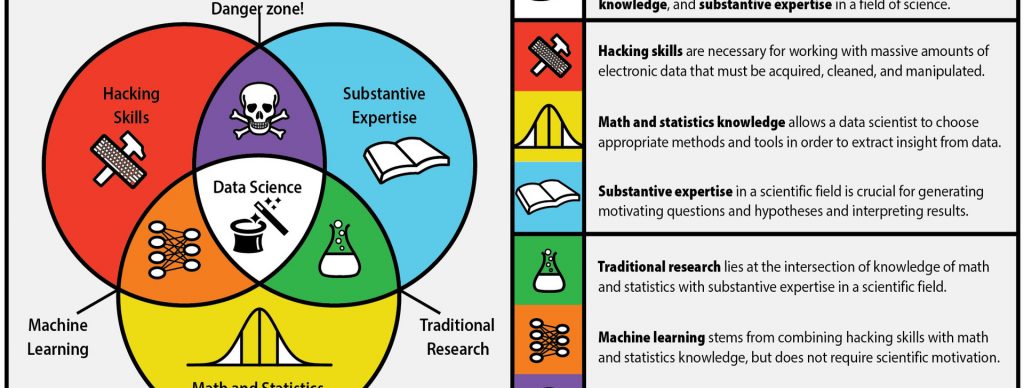As I proceed to write this next piece, it was heartening to receive some feedback from those who read my last piece titled “Analytics – not so complex after all“ in a previous recent issue of this same publication, which seemed to compliment the fact that it had ‘made such a simple read’ on a subject which many have begun to fear as being rather complex, and loaded with technicalities.
Around the subject of analytics or more specifically data analytics, the profession of a ‘data scientist’ draws much ‘awe’, with it being quoted as being ‘the sexiest job of the 21st century’.
This piece dwells on this very highly regarded species (unfortunately often even feared in some quarters by those who fear data like the plague, and hardly understand its value).
I am reminded of the famous quote which describes Big Data and goes something like : ‘it being like teenage sex, of which everyone talks about, nobody really knows how to do it, everyone thinks everyone else is doing it, so everyone is drawn towards it, claims or likes to claim they are doing it’.
‘Simplicity’ is at the core behind the success of this species:
Data has been around us for centuries and has only evolved in different forms, from the growing number of sources and at varying speeds, sizes and other parameters, and in the process has recently given birth to the species called Data Scientists.
With the data to address and exploit posing to be large and complex in itelf, the key lies in not being overwhelmed but taking a simplistic approach in addressing the problem therefore by breaking it down to its lowest common denominator.
A very simple high level process to data science and its successful steps are in clearly defining the following very simple questions :
What problem are we really solving
Importantly, this must be explained in plain and simple language that can be easily understood rather than being loaded with jargon, and that has things off to a great start. This may be harder than it appears.
How do we know that we’ve got there
Having an error metrics for cross-validation or KPIs. There may be situations though where not all error metrics may be quantifiable.
What are we going to do with it
Addressing the problem of relevance is important rather than spending months on a problem which doesn’t yield any benefits from its resolved outcome.
How impactful is it to the business
Define the change that would happen after solving the problem with the help of data..
What is the most ‘out-of-the-box’ thing that can be done with data
Getting people to come up with ‘out-of-the-box’ applications or uses to which the data can be put.
In the above regard, there are some very cool yet simple data products which have come into being in our everyday lives, which we have come to take for granted.
One of them that comes to mind being ‘Google Maps with Traffic’, which is nothing but maps which we grew up with and were trained to read even as kids, but is now with significant amount of technology and crowd-sourced traffic data which is fed into it real time from people’s phones.
What makes Data Scientists
Being new and appearing sexy, Data Science is a field that has drawn many to even make a career transition, invariably upskilling themselves in certain areas. The Venn diagram (on the left) reflects what makes a data scientist akin to a Swiss-army knife :
There is no single role that covers this much hyped profession. The explosion in demand in areas like Machine Learning for example has happened very rapidly, thus having educational institutions and online educational platforms grabbing the opportunity and scale up with courses being offered. Aspiring Data Scientists have been taking the opportunity almost as if self-breeding, to upskill in relevant areas and help fill up their knowledge gaps to get themselves into the ‘sweet spot’.
In Malaysia for example, MDEC has set a target to have at least 2,000 trained Data Scientists by the year 2020. This sees hectic activity to this effect through workshops and often subsidised and affordable short courses being publicis ed and conducted every other day.
It may be pertinent to mention here that there is a need for not only the right aptitude and skillsets, but also the right attitude towards recognizing the value of insights and passion for data to soil one’s hands with it.
Highly Paid yet sometimes a frustrated breed :
Despite the gloss and glamour like is the case with many other professions, the US which is ahead on the curve as compared to other countries has been seeing its share of challenges towards talent casualties. Recent surveys of 64K developers on Stack Overflow revealed that 14.3 per cent of Machine Learning specialists were seeking greener pastures, with Data Scientists being a close second at 13.2 per cent. (www.ft.com : How Machine Learning creates new professions – and problems).
The above frustration seems to stem from expectation not meeting reality owing to the following key reasons :
- lack of clear questions to answer
- lack of technical knowledge among non-specialist managers
- lack of other like-minded talent to work with
- being reduced to becoming the ‘go to’ person about anything data
To sum up therefore, in terms of key ingredients it’s about having the passion for data and insights, being inquisitive and asking the right questions, exploiting the numerical and logic skillsets and not being overwhelmed with the data.
Salim is Founder and Managing Director of On-Target Marketing Solutions, Malaysia, a digital marketing and data analytics company. Given his immense passion for data and strong belief in its producing great insights,he has combined over three decades of Marketing experience recently with a Data Science Certificate course. He is contactable at salim@myontarget.com
MARKETING Magazine is not responsible for the content of external sites.











